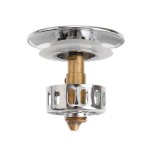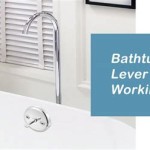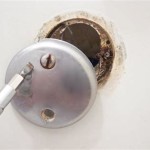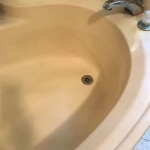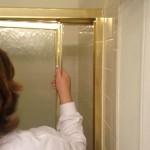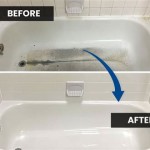Replacing Your Bathtub with a Shower Stall: A Comprehensive Guide
Many homeowners eventually face the decision of whether to replace their bathtub with a shower stall. This renovation projects represent a significant investment and requires careful consideration of various factors, including personal needs, lifestyle changes, property value, and the specific characteristics of the bathroom space. Understanding the benefits, potential drawbacks, and the installation process involved is essential for making an informed decision.
This article provides a comprehensive guide to replacing a bathtub with a shower stall, covering key aspects such as assessing your needs, exploring different shower stall options, understanding the installation process, and addressing potential challenges.
Assessing Your Needs and Lifestyle
The primary motivation for replacing a bathtub with a shower stall often stems from changing needs and lifestyles. Consider the following questions to determine if this renovation is right for you:
Accessibility: As individuals age or experience mobility issues, stepping into and out of a bathtub can become challenging and potentially hazardous. A shower stall, particularly one with a low threshold or a curbless design, offers improved accessibility and safety. Features like grab bars and built-in seating can further enhance accessibility for those with limited mobility.
Space Optimization: Bathtubs, especially standard-sized models, can occupy a significant amount of bathroom space. Replacing a bathtub with a shower stall can free up valuable floor area, making the bathroom feel more spacious and open. This is particularly beneficial in smaller bathrooms where maximizing space is a priority.
Usage Habits: Honestly assess how frequently you actually use your bathtub. If you primarily take showers, then a bathtub may simply be occupying space unnecessarily. A dedicated shower stall may be a more practical and efficient use of the bathroom area.
Time Constraints: Showers generally require less time for preparation and cleanup compared to baths. A shower stall can be a convenient option for individuals with busy schedules.
Personal Preferences: Some individuals simply prefer showering over bathing. If you find yourself consistently opting for a shower, replacing the bathtub with a shower stall can align your bathroom with your personal preferences.
Exploring Shower Stall Options and Features
Once you've determined that a shower stall is a suitable replacement for your bathtub, the next step involves exploring the diverse range of shower stall options available. Consider the following factors when selecting a shower stall:
Shower Stall Types: Several types of shower stalls cater to different needs and preferences. These include:
Pre-fabricated Shower Units: These are self-contained units that come in various sizes and configurations. They are generally easier and faster to install than custom-built showers. They often represent a more cost-effective option.
Custom-Built Shower Stalls: These showers are constructed from scratch, allowing for complete customization of size, shape, materials, and features. Custom showers offer a more personalized and luxurious experience but are typically more expensive and require more time for installation.
Walk-in Showers: Characterized by a low threshold or curbless design, walk-in showers provide easy access for individuals with mobility issues.
Corner Showers: Designed to fit into corners of a bathroom, corner showers are a space-saving option that can maximize available floor area.
Shower Door Styles: The type of shower door significantly impacts the overall appearance and functionality of the shower stall. Common shower door styles include:
Sliding Doors: These doors slide horizontally along tracks, making them a good option for bathrooms with limited space.
Hinged Doors: These doors swing open on hinges, providing a wider opening for entry and exit.
Pivot Doors: These doors pivot around a central point, offering a unique and stylish look.
Frameless Doors: Constructed without a metal frame, frameless doors offer a sleek and modern aesthetic.
Shower Fixtures: The choice of shower fixtures can significantly enhance the showering experience. Consider the following fixtures:
Shower Heads: Options range from standard shower heads to rainfall shower heads, handheld shower heads, and multiple shower heads for a more immersive experience.
Shower Valves: Thermostatic shower valves maintain a consistent water temperature, preventing sudden temperature fluctuations.
Body Sprays: These jets of water massage the body, providing a spa-like experience.
Shower Enclosure Materials: The materials used for the shower enclosure impact its durability, aesthetics, and maintenance requirements. Common materials include:
Acrylic: Acrylic shower enclosures are durable, easy to clean, and relatively inexpensive.
Fiberglass: Fiberglass shower enclosures are similar to acrylic but may be more prone to scratches and fading.
Tile: Tile offers a wide range of design options and can be customized to create a unique look. However, tile requires more maintenance due to grout cleaning.
Glass: Glass shower enclosures provide a sleek and modern look but require regular cleaning to prevent water spots and soap scum buildup.
Understanding the Installation Process
Replacing a bathtub with a shower stall is a complex project that typically involves the following steps:
Demolition: The existing bathtub and surrounding tile or wall coverings must be carefully removed. This process can be messy and may require the use of dust barriers to contain debris.
Plumbing Modifications: Alterations to the plumbing system may be necessary to accommodate the new shower stall. This may involve relocating drainpipes, water supply lines, and shower valve connections. It is highly recommended to hire a licensed plumber for any plumbing modifications.
Framing and Waterproofing: If building a custom shower, framing the shower stall walls is required. Proper waterproofing is crucial to prevent water damage and mold growth. This typically involves applying a waterproof membrane to the walls and floor of the shower stall.
Shower Base Installation: The shower base, or pan, is installed to create a watertight enclosure. The shower base directs water to the drain and prevents leaks. For curbless showers, the floor may need to be sloped to ensure proper drainage.
Tile or Wall Panel Installation: Tile, acrylic panels, or other wall coverings are installed to finish the shower stall walls. This step requires precision and attention to detail to ensure a visually appealing and watertight finish.
Shower Door Installation: The shower door is installed according to the manufacturer's instructions. Proper alignment and sealing are essential to prevent leaks.
Fixture Installation: Shower heads, valves, and other fixtures are installed and connected to the plumbing system.
Final Inspection and Cleanup: After the installation is complete, a thorough inspection is conducted to ensure that all components are functioning properly and that there are no leaks. The work area is then cleaned and any debris is removed.
Hiring a Professional: While some homeowners may attempt to replace a bathtub with a shower stall as a DIY project, it is generally recommended to hire a qualified contractor. A professional contractor has the experience, knowledge, and tools necessary to complete the project safely and efficiently. Furthermore, a professional can ensure that the installation meets building codes and that all necessary permits are obtained. Attempting this project without sufficient experience can lead to costly mistakes and potential water damage.

How To Replace Your Bath With A Shower Victorian Plumbing

Sweeten Bathtub To Shower Conversions That Add Style Space

Consider These Shower Types When Replacing Your Bathtub

Ditching The Tub New York Times

Bathtub Inside Walk In Shower Layout And Design Ideas

8 Bathtub And Shower Combo Ideas The Family Handyman

5 Ways To Upgrade Your Bathtub Shower Combo Better Living S Usa

A Bathtub Or Walk In Shower What To Install Inside Your Bathroom

Tub Vs Shower The Big Bathroom Remodeling Design Decision Bob Vila

Replacing A Bath With Walk In Shower Our Expert Guide
Related Posts

